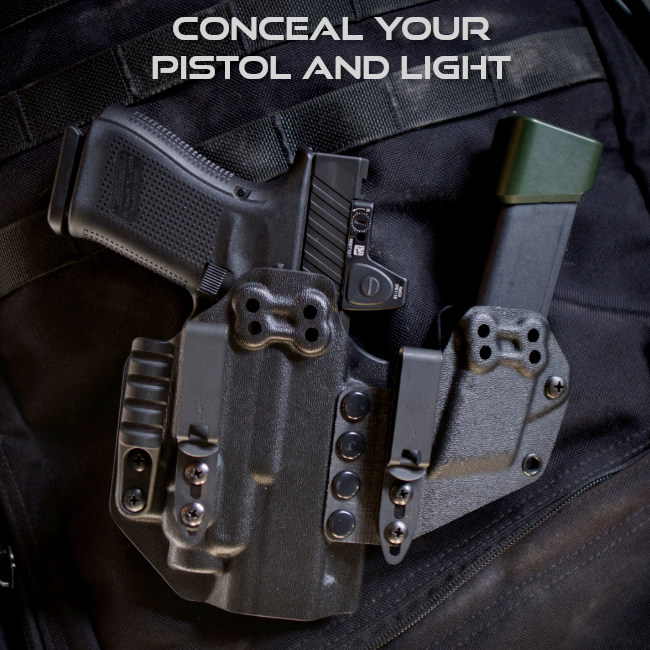Introduction
The Streamlight TLR-7A had long been the benchmark by which I compared every other pistol light. Its combination of packaging, output, durability, and widespread holster support made it a go-to for those looking to add a light to their pistol. This changed with the release of the Sig Sauer Foxtrot2R, which was smaller and brighter, plus it worked with rechargeable batteries, when the TLR-7A did not.
Now Streamlight has replaced the TLR-7A with the TLR-7X, which adds compatibility with rechargeable batteries. Besides this, Streamlight does not advertise that anything else about the light has changed. Which raises a couple questions: are there any other differences, and if you already have the TLR-7A, do you upgrade to the new TLR-7X?
Let’s find out.
First Impressions

The TLR-7X is dimensionally identical to the TLR-7A, meaning it will work with existing TLR-7A holsters.
As usual, I love the switches on the TLR-7, and the light’s small size makes it convenient for appendix carry.
There’s not much to say that hasn’t already been said, either by myself or by others. So let’s move on to the specs and see if there are any major differences between the old and new models.
Into the Lab: Lumens and Candela

The TLR-7X mounted to an LLT PX4 Storm.
Lumens
The TLR-7X’s major selling point is that it’s compatible with rechargeable batteries. That being said, it’ll still take non-rechargeable CR123A batteries as well. Let’s compare how it performs with both batteries versus the old TLR-7A.
As I suspected, the TLR-7X with the rechargeable SL-B9 battery does perform slightly better for the first ten minutes.
Strangely, the old TLR-7A has a better output curve than the new TLR-7X when using non-rechargeable batteries.
The TLR-7A continued to produce about fifty lumens for another half hour, and then about ten lumens for another half hour.
The TLR-7X with the non-rechargeable battery began fluctuating between sixty lumens and nine lumens for the last couple minutes of the test, which would be irritating if you were still using it for a critical application.
Let’s get a closer look at those first ten minutes:
The TLR-7X only produces about 10% more light than the old TLR-7A, which is probably why Streamlight doesn’t bother advertising the difference.
Candela
Streamlight has always advertised 5,000 candela for the TLR-7 series, but I have yet to see a sample produce more than 4,000 candela. Let’s see how these samples perform:
| Candela (0s) | Candela (30s) | |
| Streamlight TLR-7X SL-B9 | 4488 | 4067 |
| Streamlight TLR-7X CR123A | 3916 | 3873 |
| Streamlight TLR-7A | 3914 | 3748 |
Again, the difference between the A and the X is fairly minor. It is nice to see the TLR-7X closer to its candela claim, though!
Takeaways
If you don’t already have a pistol light, then the TLR-7X is a great option.
The simple addition of rechargeable batteries is not enough to make this light competitive with the Foxtrot2R, but since the Foxtrot2R is almost impossible to find right now, the TLR-7X should be the go-to for a compact weapon light.
If you currently have the old TLR-7A, then stick with it. It’ll be a long time before the cost savings of using a rechargeable battery adds up enough to justify the purchase of another weapon light.
What do you think? Is there a difference between these two lights that I missed? Are you going to be making the switch to the latest and greatest TLR-7X? Are you waiting on rechargeable batteries for the TLR-7 Sub? Let me know down in the comments!







